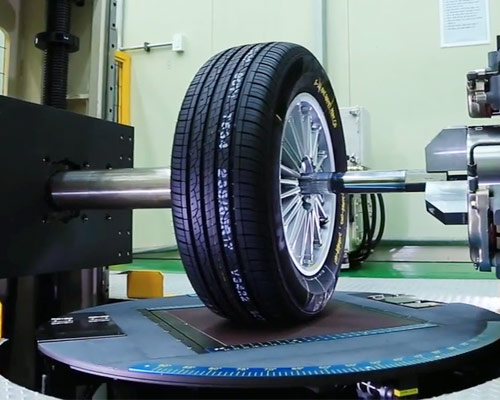
Nexen Tire America, Inc. a worldwide leader in high-performance, passenger, SUV/light truck and winter tire technology, announced the development of an Artificial Intelligence (AI) and big data-driven methodology aimed at reducing tire noise. The big data research for Noise, Vibration, and Harshness (NVH) was jointly conducted with Hyundai-Kia Automotive Group and Inha University in Korea.
Since 2018, Nexen Tire conducted the joint research with long-standing partner Hyundai-Kia Automotive Group to increase customer satisfaction and improve the environment by reducing noise levels. More importantly, the research is set to make an impact that can help reduce research and development (R&D) time and costs.
AI technology and big data are becoming an integral part of the Fourth Industrial Revolution, the future of mobility and the fast-changing automotive industry. Researchers from “THE NEXEN univerCITY” together with Hyundai-Kia and Inha University, were able to make use of vast amounts of data as well as deep-learning algorithms based on tire patterns and noise design factors to create an AI system that both optimizes the product and improves on the pass-by noise of automobiles and tires. Based on these results, Nexen Tire was able to create new and exclusive designs for its tires by using its own image processing technology.
Due to worldwide regulations and the increasing trend on noise-reduction for electric vehicles, Nexen Tire designed an anechoic chamber containing dozens of microphone sensors to measure noise, analyze pass-by noise (PBN) and detect causes of noise from vehicle powertrain. In addition, Nexen Tire created Korea’s first four-drum research equipment facility and is currently conducting tests with actual vehicles. The results of the braking test performance on snow, hydroplaning and wet surfaces were successful with the technology that utilizes AI and big data. Moreover, internal- and external-noise generated by cars can be reduced to 1 dB (decibel) and 3 dB (decibel), respectively.
The company remains at the forefront of technological advancements, having previously developed a system that predicts aerodynamic reduction to improve fuel efficiency. Now, coupled with this new noise-reduction prediction system, the company is stepping up efforts to apply these technologies to Original Equipment (OE) in new premium automobiles as well as Replacement Equipment (RE). Nexen Tire and Hyundai-Kia are hoping to find new ways to utilize this technology on future vehicles.
“Nexen Tire constantly monitors top industry trends and feedback from customers and what we’ve discovered is that nearly all drivers want a quieter driving experience. This system has provided valuable scientific information about tire noise and based on that information, we’ve developed an industry-exclusive manufacturing process to reduce tire noise using AI technology,” said John Hagan, executive vice president of sales for Nexen Tire America, Inc. “This methodology is exclusive to Nexen Tire and will allow us to expand our technology to provide some of the industry’s best and quietest tires to global automotive manufacturers.”
About Nexen Tire: Inspired by Nexen’s global family of drivers to engineer superior performing tires – from championship-winning Formula DRIFT drivers, rock-climbing off-road enthusiasts to everyday commuters – Nexen Tire utilizes proprietary technology and the highest quality standards in the industry to guarantee world-class products backed by unrivaled customer support for the life of each tire. As a worldwide leader in high-performance, passenger, SUV/light truck and winter offerings, the company is second-to-none in research, development and state-of-the-art manufacturing. And as part of a select group of tire manufacturers worldwide that are specified as standard fitment on original equipment vehicles, Nexen delivers premium products at a sensible price.











More Stories
Sika structural foam enhances the crash performance of automotive steel structures
Seyond High-performance LiDAR supply chain ready to meet demand
Hydro Extrusions: Recycled aluminum helps reduce the carbon footprint of electric vehicles